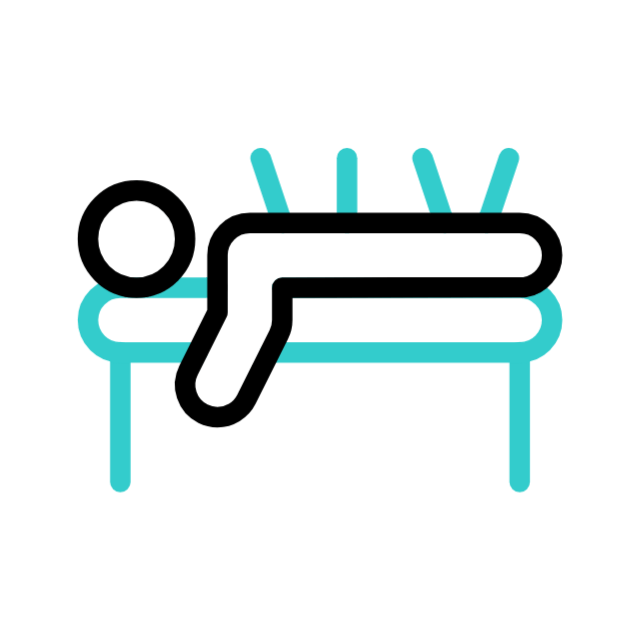Say Goodbye to Surgery: Non-Invasive Solutions for Back Pain
September 23, 2024
For many, the fear of invasive surgery looms large when seeking long-term back pain relief. However, the medical landscape has evolved significantly, and surgery is no longer the only solution. Non-invasive treatments have advanced, offering effective alternatives that are safer, less risky, and often just as impactful. If you're looking for relief without the scalpel, this blog explores some of the most innovative, non-invasive back pain solutions available today.

Why Avoid Surgery?
While surgery can be effective for some severe cases and you should always consult a healthcare professional, it often comes with risks like infection, extended recovery times, and potential complications. Invasive procedures can also lead to high costs, both financially and in terms of downtime. Non-invasive treatments, on the other hand, focus on addressing the root cause of back pain without the need for cutting into your body, making them safer and more accessible for a wider range of people.
The Rise of Non-Invasive Treatments

The growing popularity of non-invasive options is a testament to their success. Advances in technology, research, and personalised care have paved the way for innovative therapies that are both effective and gentle on the body. These treatments can address the underlying causes of back pain—whether it's muscular imbalance, poor posture, or wear and tear from daily activities—without the need for surgical intervention.
Top Non-Invasive Back Pain Treatments
Here are some of the most promising and widely used non-invasive treatments for effective back pain:
1. Cognitive Functional Therapy (CFT)

Cognitive Functional Therapy (CFT) is a revolutionary approach that combines movement retraining with psychological strategies to address both the physical and emotional components of back pain. CFT focuses on retraining how you move and interact with your body, breaking habits that may be contributing to your pain. By addressing the mental aspect of pain, CFT helps reduce fear and anxiety around movement, allowing for better long-term outcomes. More info on it here
2. Wearable Devices

Wearable technology has revolutionised back care in recent years. Devices like Curv, a wearable vest equipped with sensors, track your movement throughout the day and offer personalised exercise plans based on your specific needs. This type of non-invasive, data-driven approach helps prevent and relieve back pain by ensuring you move correctly and avoid habits that strain your spine. These devices provide real-time feedback, which helps users adjust their posture and movements, effectively treating back pain without the need for surgery or prolonged physical therapy sessions.
3. Acupuncture

Acupuncture is an ancient practice that involves inserting thin needles into specific points on the body. It's believed to stimulate the body's natural healing process by improving blood flow and reducing inflammation. Acupuncture has gained popularity as a non-invasive method to relieve chronic back pain by targeting key pressure points. Many patients report significant pain relief after just a few sessions, and the treatment can be combined with other non-invasive methods like CFT for even better results.
Benefits of Non-Invasive Treatments

Minimal Recovery Time: Unlike surgery, non-invasive treatments often require little to no downtime, allowing you to return to your daily activities faster.
Lower Risk: Without the need for incisions, non-invasive therapies have a much lower risk of complications like infection or scarring.
Cost-Effective: Many non-invasive treatments are significantly cheaper than surgery, making them accessible to a wider range of people.
Holistic Approach: Non-invasive methods often treat the body as a whole, addressing both the physical and psychological aspects of pain, leading to more sustainable results.
Personalised Care: Many non-invasive treatments, such as wearable technology or physical therapy, are tailored specifically to your unique condition and needs.
When Is Surgery Necessary?
While non-invasive treatments are effective for most cases of back pain, there are situations where surgery may still be the best option. If back pain is caused by conditions like severe herniated discs, spinal stenosis, or fractures that don’t respond to other treatments, surgery may be necessary. Always consult with a healthcare professional to explore your options and determine the best course of action for your specific condition.
The Path to a Pain-Free Future
In a world where surgery was once seen as the final solution to back pain, non-invasive treatments are now proving to be game-changers. Whether it’s Cognitive Functional Therapy, wearable devices like Curv, or acupuncture, the future of back care is looking brighter—and less invasive. By embracing these innovative methods, you can manage and even overcome back pain without the need for surgery.
So, say goodbye to the scalpel and hello to smarter, safer solutions. Your back—and your overall well-being—will thank you.